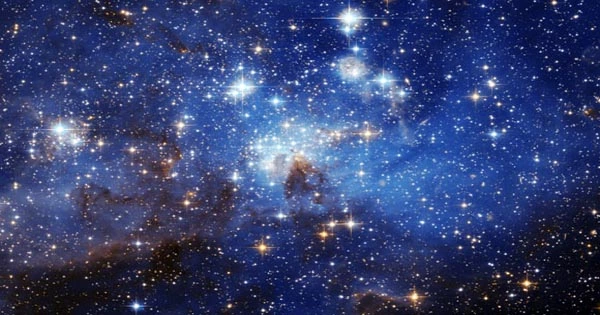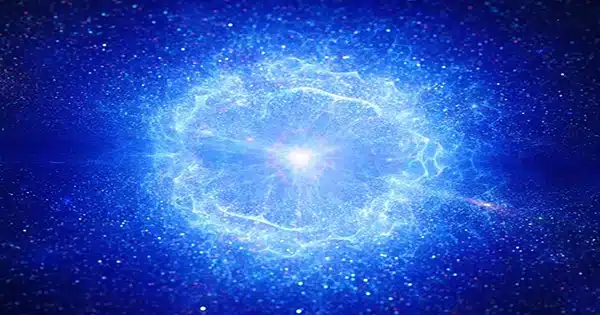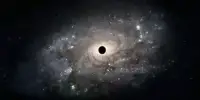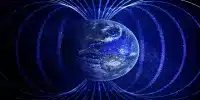Why is there something rather than nothing? This fundamental issue, which invites us to investigate the beginnings of our existence, is at the center of both science and philosophy.
All life on Earth, according to evolutionary theory, may be traced back to a single ancestor known as the last universal common ancestor (LUCA). Researchers interested in the origins of life are captivated by the search for LUCA. But our curiosity doesn’t stop there. We can explore further into the beginnings of the Earth and the Universe.
From a cosmological standpoint, we discover an incredible link between the birth of stars, the development of planets, and the expansion of the Universe. The cosmic creation dance takes place as a result of a complex interplay between the pace of expansion of the Universe, the gravitational collapse of dark matter, and the capture of hydrogen – the life-giving element required for star formation. Life as we know it would not have existed without this delicate cosmic dance.

Thus, our cosmic origin tale begins with a fundamental question: What was the origin of the Universe’s expanding spacetime?
The dominant model of the expanding Universe is known as Big Bang Cosmology. This idea, proposed by the English scientist Fred Hoyle during a BBC Radio broadcast in March 1949, proposes that all matter in the Universe started from a massive explosion at some point in the distant past.
Einstein’s well-tested theory of general relativity, which depicts spacetime as a flexible medium capable of bending, expanding, and collapsing, lends support to the idea of an expanding Universe. If we rewind the cosmic tape, we would see the Universe collapse into an infinitesimally small point of infinite temperature, energy, and spacetime curvature, known as the Big Bang singularity.
Stephen Hawking and his colleagues have spent most of their careers attempting to understand the confusing nature of this singularity. For instance, if everything, including time itself, was created during the Big Bang, how can we talk about what happened before time existed?
Fortunately, daring cosmologists have looked beyond the Big Bang singularity in search of other theories that go beyond infinity and the genesis of time.
One intriguing theory proposes that a cosmic epoch preceding the Big Bang produced a new physics paradigm, effectively replacing the singularity.
Because Einstein’s theory adheres to classical physics rules, one feasible escape path requires the presence of a quantum ‘bridge’ connecting an expanding Universe to one that collapses into a Big Bang – an event known colloquially as the Big Bounce.
Exploring this approach necessitates expanding Einstein’s theory into the realm of quantum gravity, and both string theory and loop quantum gravity offer plausible quantum gravity variations of the Big Bounce.
In a previous column, I discussed the cosmic inflation paradigm, which is a period of fast expansion with fascinating connections to topics like the cosmic microwave background and the formation of structures in the Universe. However, mathematical theories proved by Hawking and Roger Penrose show that inflation fails to escape the Big Bang’s initial singularities.
Indeed, inflation succumbs to its own Big Bang singularity!
One concept that has piqued my interest is cyclic inflation, which is a framework that blends cosmic inflation with the concept of cyclic collapse and expansion, or bounces.
This enthralling concept, developed by former postdoctoral researcher Dr Tirthabir Biswas and me, proposes that the Universe goes through infinite cycles of collapse and growth.
After a critical cycle, with enough entropy collected, the Universe undergoes inflation, a rapid acceleration of spacetime. Cyclical inflation embraces the benefits of inflation while presenting a potential escape from the Big Bang singularity by introducing cycles of bounces.
With cosmologists willing to investigate beyond the Big Bang, we have an exciting challenge: identifying observable predictions that distinguish between these competing models of the early Universe and our beginnings. These various predictions are crucial in choosing which hypothesis best reflects the origins of our existence.
Personally, I find it intriguing that supermassive black holes appear to originate too early to be explained by our present cosmological standard model. Perhaps a certain bouncing or cyclic paradigm can explain this cosmic phenomenon elegantly.
The farther we explore the fascinating tapestry of the Universe, the more secrets of our cosmic origins reveal themselves.
With each discovery, we get closer to discovering the mysteries that illuminate our existence and put light on the age-old question, “Why is there something rather than nothing?”
















